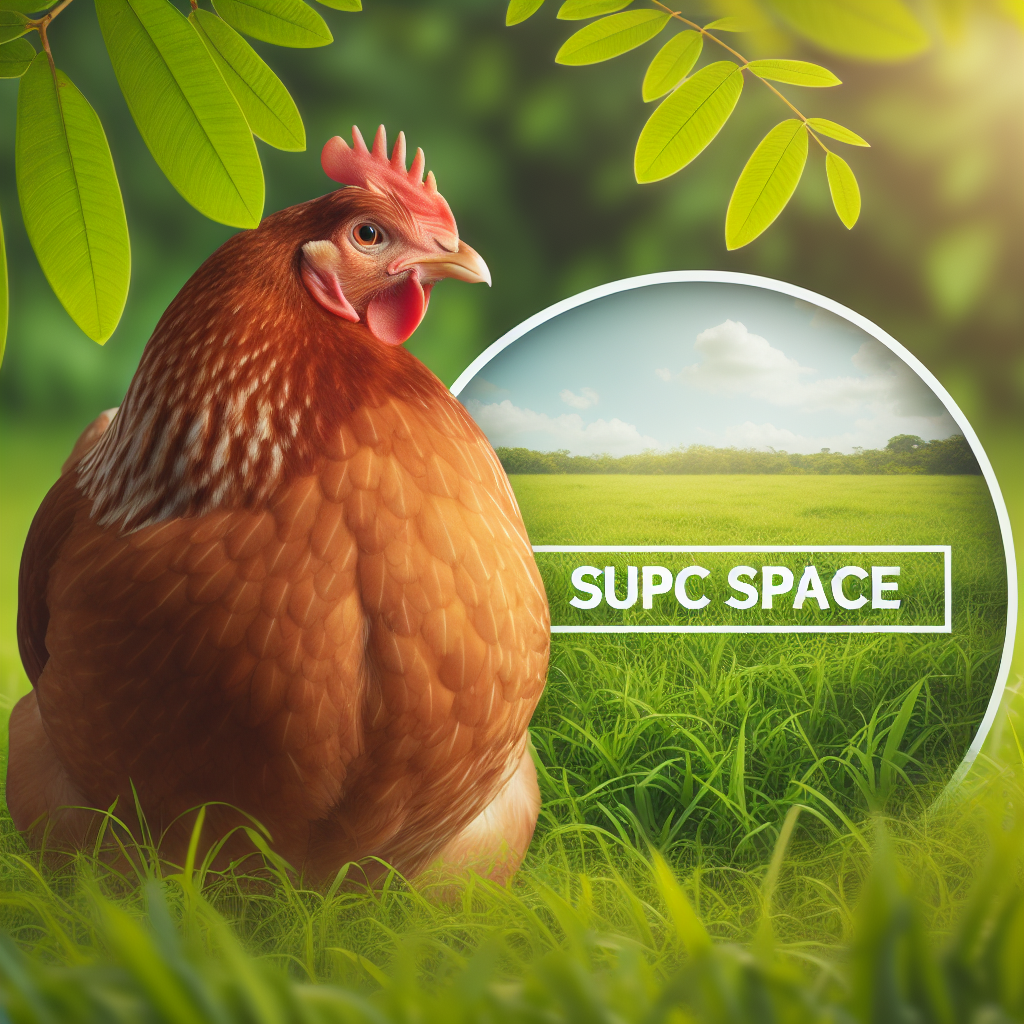Have you ever wondered if there are specific rules or guidelines dictating the amount of space required for poultry in different regions? Well, you’re in luck because that’s exactly what we’re exploring in this article. We’ll delve into the world of regional regulations and guidelines to discover if there are any restrictions on how much space poultry should have. So, if you’ve ever been curious about the space requirements for our feathered friends, keep reading to satisfy your curiosity.
Overview of Regional Regulations and Guidelines
Introduction to regional regulations and guidelines
When it comes to raising poultry, it is important to ensure that they have adequate space to live and thrive. Regional regulations and guidelines play a crucial role in ensuring the welfare of poultry by specifying the space requirements they need. These regulations and guidelines vary from region to region and take into consideration factors such as the species and breed of poultry, their age and size, the type of production system used, and the environmental conditions. In this comprehensive article, we will explore the different factors that influence space requirements for poultry and delve into the specific regulations and guidelines in various regions around the world.
Purpose of space requirements for poultry
Space requirements for poultry are not arbitrary; they serve a crucial purpose in promoting animal welfare and optimizing production outcomes. Providing adequate space allows poultry to express their natural behaviors, reducing the risk of stress, injuries, and other health issues. Sufficient space also enables better air circulation, which is essential for maintaining optimal bird health. Additionally, adequate space can help prevent the spread of diseases and optimize the efficiency of production systems. By understanding the specific space requirements for poultry, both producers and consumers can ensure ethical and sustainable practices in the industry.
Factors Influencing Space Requirements
Species and breed of poultry
Different species and breeds of poultry have varying space requirements. For example, larger birds such as turkeys or geese will naturally require more space compared to smaller birds like quails or bantams. Furthermore, specific breeds may have unique characteristics that influence their space needs. Breeds that are more active or have larger body sizes may require additional space to move around comfortably.
Age and size of poultry
The age and size of poultry also play a significant role in determining their space requirements. Younger birds may not need as much space initially, but as they grow, their need for adequate space increases. Similarly, larger birds, regardless of age, will require more space to accommodate their size and movement. It is essential for poultry farmers to monitor the growth and development of their birds to ensure that their space requirements are met at every stage of their life cycle.
Type of production system
The type of production system used, whether it is free-range, organic, or intensive, can influence the space requirements for poultry. Free-range and organic systems typically require more space to allow birds to forage, roam, and exhibit natural behaviors. On the other hand, intensive systems may have more controlled environments and smaller space allowances. The type of production system chosen must align with regional regulations and guidelines to ensure compliance with animal welfare standards.
Environmental conditions
Environmental conditions, such as temperature, humidity, and ventilation, can impact the space requirements for poultry. In regions with hot climates, birds may require more space to avoid overcrowding and heat stress. Adequate ventilation is also crucial to maintain air quality and prevent the accumulation of ammonia and other gases that can negatively affect bird health. Understanding the local climate and implementing appropriate measures to address environmental conditions is vital when determining the space requirements for poultry.
Regulations and Guidelines by Region
United States
In the United States, regulations regarding space requirements for poultry are established at both the federal and state levels. The federal regulations, enforced by agencies such as the United States Department of Agriculture (USDA), set minimum standards for animal welfare, including space requirements. These regulations ensure that birds have enough space to move, stretch their wings, and exhibit natural behaviors. Additionally, individual states may have their own specific regulations that supplement the federal standards, taking into account regional differences and considerations.
European Union
In the European Union, the European Food Safety Authority (EFSA) provides guidelines for the space requirements of poultry. These guidelines are based on scientific research and aim to ensure the welfare of animals throughout the EU. However, member states within the EU may also develop their own regulations and guidelines to address specific regional needs and circumstances. These regulations can vary slightly from country to country, but they all share the common goal of promoting animal welfare principles.
Canada
In Canada, the Canadian Food Inspection Agency (CFIA) oversees the regulations and guidelines for the space requirements of poultry. The CFIA’s regulations aim to ensure humane treatment and proper care of animals, including providing adequate space. However, each province within Canada may also have its own regulations that supplement the federal standards. These province-specific regulations consider local factors and regulations to ensure compliance with regional requirements.
Australia
In Australia, the Model Code of Practice for the Welfare of Animals: Poultry provides guidelines for poultry production. This code of practice is a national standard that covers various aspects of poultry welfare, including space requirements. Additionally, each state and territory within Australia may have its own regulations that align with the model code of practice. These state and territory-specific regulations ensure compliance and adaptability to local conditions and practices.
Brazil
In Brazil, the Ministry of Agriculture, Livestock, and Food Supply (MAPA) establishes regulations for the space requirements of poultry. These regulations set the minimum standards for bird welfare, including space allowances. Additionally, individual states within Brazil may have their own regulations that complement the federal standards. These state-level regulations take into account regional factors and promote the welfare of poultry across the country.
China
In China, the Ministry of Agriculture and Rural Affairs provides regulations for the space requirements of poultry. These regulations ensure the welfare of birds by specifying the minimum space allowances. Additionally, local governments within China may also develop their own regulations to address specific regional needs and circumstances. These regulations complement the national standards and contribute to the welfare of poultry across different provinces in China.
India
In India, regulations for the space requirements of poultry are established by various government agencies, including the Ministry of Agriculture and Farmers Welfare. These regulations aim to ensure the humane treatment and well-being of poultry by setting minimum space allowances. Additionally, each state within India may have its own specific regulations that supplement the national standards, considering regional variations and priorities.
South Africa
In South Africa, regulations for the space requirements of poultry are established by the Department of Agriculture, Land Reform, and Rural Development (DALRRD). These regulations aim to ensure the welfare of birds by specifying minimum space allowances. They take into account various factors, including the type of production system and environmental conditions. By complying with these regulations, poultry farmers in South Africa can contribute to the ethical and sustainable production of poultry.
United Kingdom
In the United Kingdom, regulations for the space requirements of poultry are established by various government bodies, including the Department for Environment, Food and Rural Affairs (DEFRA). These regulations ensure the welfare of birds by setting minimum space allowances. Similar to other regions, individual devolved administrations within the UK, such as Scotland, Wales, and Northern Ireland, also have their own regulations that align with the national standards while considering regional variations.
Japan
In Japan, regulations for the space requirements of poultry are established by the Ministry of Agriculture, Forestry, and Fisheries. These regulations set minimum space allowances for poultry to ensure their well-being and promote their natural behaviors. Additionally, each prefecture in Japan may have its own specific regulations that supplement the national standards. These prefecture-specific regulations address local considerations and contribute to the welfare of poultry across different regions in Japan.
In conclusion, regional regulations and guidelines play a vital role in ensuring the welfare of poultry by specifying their space requirements. These regulations and guidelines consider factors such as species and breed, age and size, production system, and environmental conditions. By adhering to these standards, poultry farmers can ensure that their birds have enough space to express their natural behaviors and live a healthy and fulfilling life. The specific regulations and guidelines vary from region to region, reflecting the unique considerations and priorities of each area. By understanding and complying with these regulations, both producers and consumers can support ethical and sustainable practices in the poultry industry.




